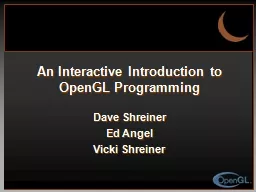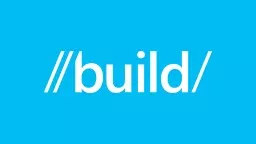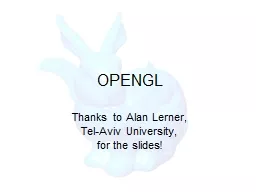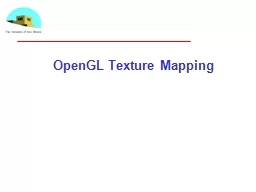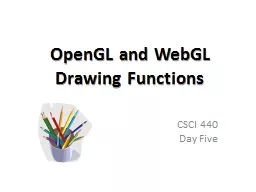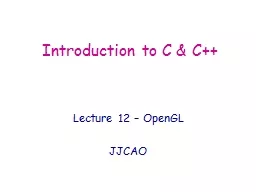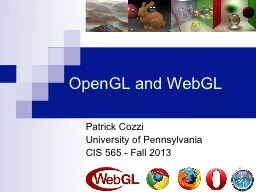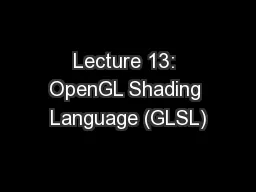PPT-OpenGL and WebGL
Author : tawny-fly | Published Date : 2017-08-07
Patrick Cozzi University of Pennsylvania CIS 565 Fall 2014 OpenGL Is a Cbased API Is cross platform Is run by the ARB Architecture Review Board Hides the device
Presentation Embed Code
Download Presentation
Download Presentation The PPT/PDF document "OpenGL and WebGL" is the property of its rightful owner. Permission is granted to download and print the materials on this website for personal, non-commercial use only, and to display it on your personal computer provided you do not modify the materials and that you retain all copyright notices contained in the materials. By downloading content from our website, you accept the terms of this agreement.
OpenGL and WebGL: Transcript
Download Rules Of Document
"OpenGL and WebGL"The content belongs to its owner. You may download and print it for personal use, without modification, and keep all copyright notices. By downloading, you agree to these terms.
Related Documents





